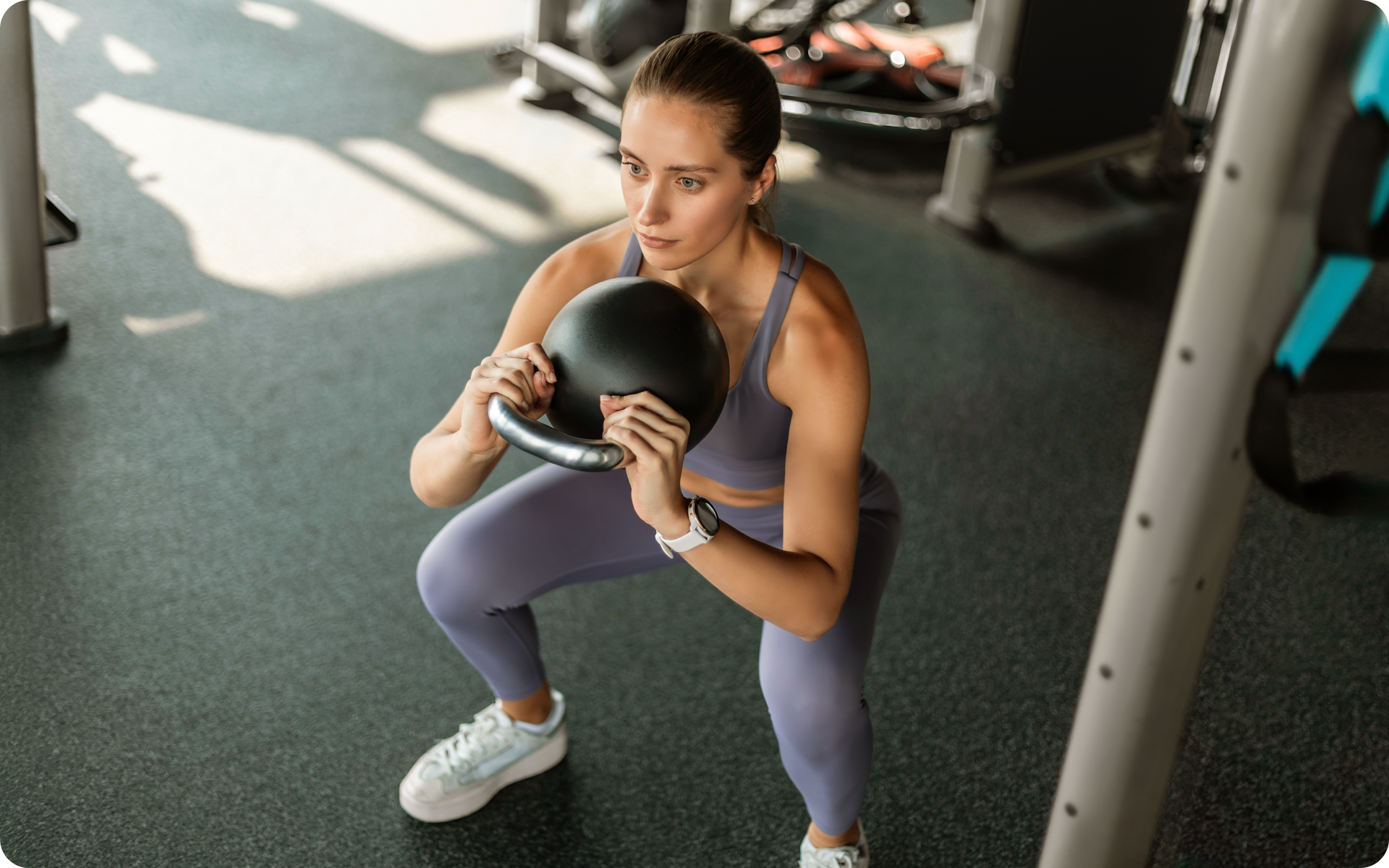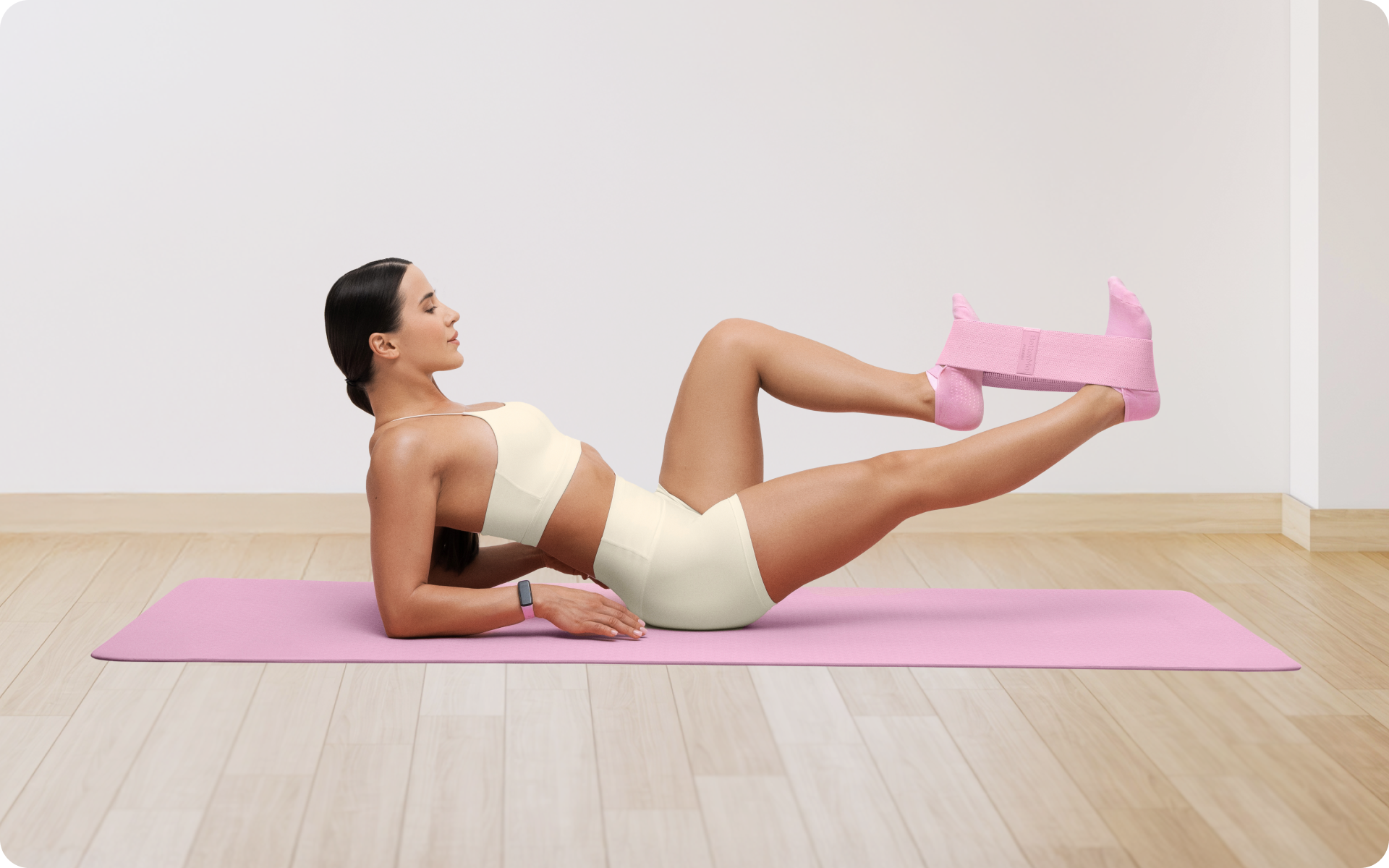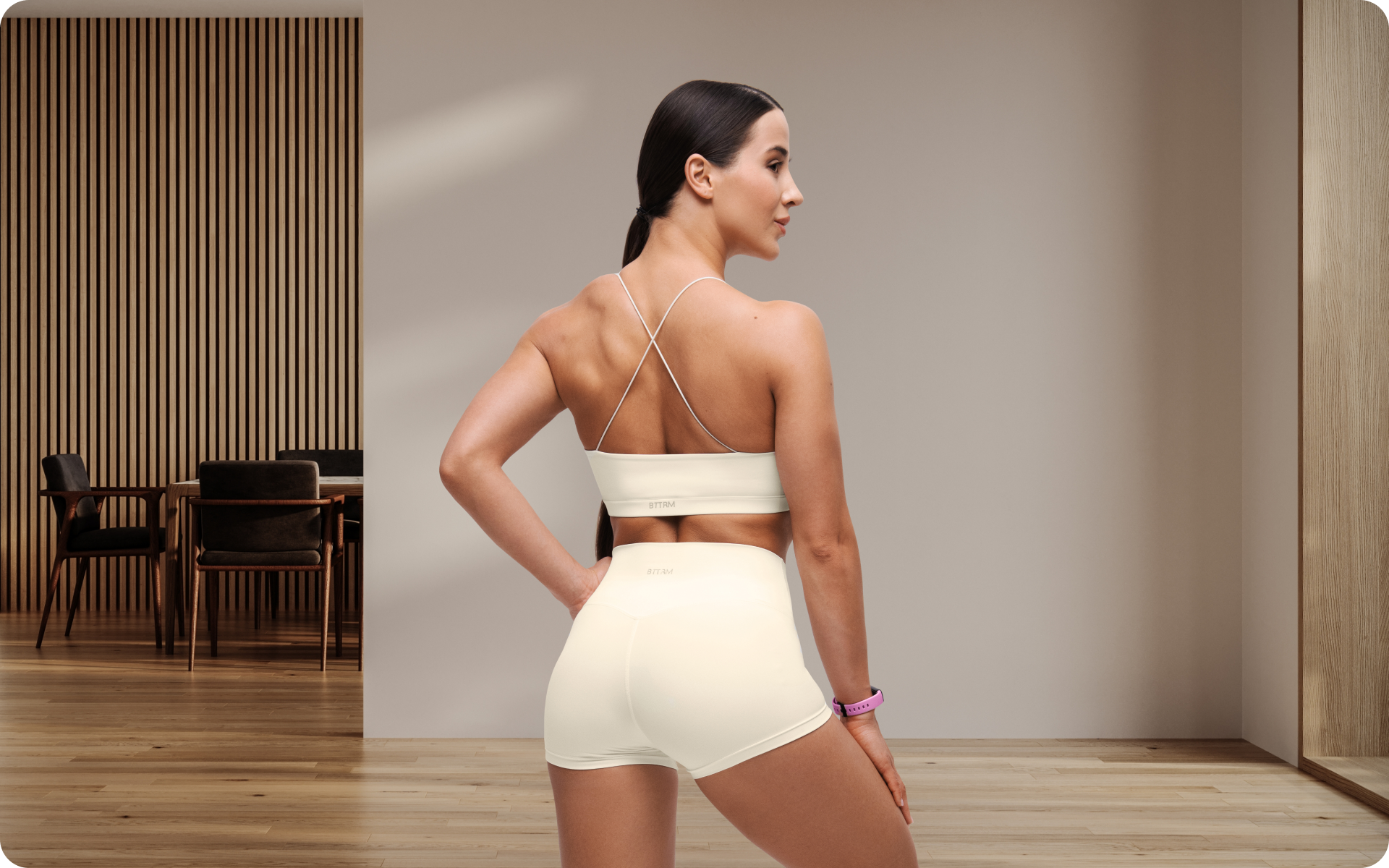We’ve all seen them, the Instagram models with a tiny waist, big hips, and a round perky butt. And we can’t help but wonder how they got that ultimate hourglass figure.
Genetics plays a major role in how our bodies look. Some of us are blessed with a naturally curvy figure while others have to work hard for it. If you fall into the latter category, don’t worry! With the right exercises and a proper diet, you too can achieve that coveted hourglass shape.
In this workout guide, we’ll focus on 12 exercises that target your waist and butt muscles to help you get the perfect hourglass figure.
Is a Tiny Waist with Big Hips Attractive?
An hourglass figure has been a beauty standard for centuries. It’s often associated with femininity, fertility, and attractiveness. Many women strive to achieve this figure as it’s considered to be the epitome of a perfect body shape (1).
But what exactly makes a tiny waist with big hips so attractive?
It is all about proportion and symmetry. The hourglass figure follows the “golden ratio” of 3:2:3, where the bust and hips are approximately 3/10th wider than the waist. This creates a balanced and visually appealing silhouette that is universally admired.
Moreover, having a small waist relative to your hips can give the illusion of a smaller overall frame, which makes you look more petite and feminine.
That being said, beauty comes in all shapes and sizes, and there is no one “perfect” body type. What one person finds attractive may not be the same for another. The most important thing is to feel confident and comfortable in your own skin, no matter your body shape.
How to Get a Tiny Waist with Big Hips
Exercise and a healthy diet are the key ingredients to achieving a tiny waist and big hips. Specifically, focusing on exercises that target your core and glute muscles will help you shape these areas for a more hourglass-like figure. Eating in a calorie deficit can also help reduce overall body fat (2), making your waist look smaller in proportion to your hips.
Here are 12 exercises you can incorporate into your workout routine to help you get a tiny waist and big hips:
Cable Woodchopper (Obliques)
The cable woodchopper primarily targets the oblique muscles, which are essential for trunk rotation and stability during everyday movements, such as twisting when reaching for an object. Strengthening these muscles can improve your functional strength and reduce the risk of injury.
Steps to Perform:
- Attach a cable to a high pulley.
- Stand with your side to the machine with your feet shoulder-width apart.
- Grip the handle with both hands, your arms extended above one shoulder.
- Engage your core and twist your torso, pulling the cable down diagonally across your body.
- Finish the movement near your opposite knee, maintaining a strong core.
- Slowly return to the starting position and repeat.
- Perform 3 sets of 12-15 reps on each side.
Curtsy Lunge with Side Kick (Gluteus Medius, Gluteus Maximus)
This exercise engages the gluteus medius and maximus, which are important for hip stability and movement, in addition to balance in daily activities such as walking and climbing stairs.
Steps to Perform:
- Stand with your feet hip-width apart.
- Step back with your right leg into a curtsy lunge, bending both knees.
- Return to standing and immediately kick your right leg out to the side.
- Stabilize yourself and return to the starting position.
- Repeat the curtsy lunge followed by the side kick for the desired number of reps.
- Alternate legs and complete 3 sets of 10-12 reps per side.
Read more: Underbutt Workouts That Help Lift, Tone, Sculpt, and Strengthen
Frog Pumps (Gluteus Maximus)
Frog pumps primarily target the gluteus maximus, enhancing your overall strength and power during activities such as jumping and running.
Steps to Perform:
- Lie on your back with your feet together and knees bent outward.
- Place your hands at your sides for support.
- Engage your core and push through your heels to lift your hips off the ground.
- Squeeze your glutes at the top of the movement.
- Slowly lower back to the starting position and repeat.
- Aim for 3 sets of 20-25 reps.
Russian Kettlebell Swing (Gluteus Maximus, Hip Flexors)
This dynamic movement engages both the gluteus maximus and hip flexors, which are essential for explosive movements and core stability during athletic activities.
Steps to Perform:
- Stand with your feet shoulder-width apart, holding a kettlebell with both hands.
- Hinge at the hips, swinging the kettlebell between your legs.
- Drive through your hips, swinging the kettlebell forward to shoulder height.
- Keep your arms relaxed and focus on using your glutes.
- Allow the kettlebell to swing back down and repeat.
- Perform 3 sets of 12-15 swings.
Side Plank Hip Dips (Obliques, Hip Flexors)
Engaging the obliques and hip flexors, this exercise promotes core stability and functional strength, which are necessary for several daily tasks.
Steps to Perform:
- Start in a side plank position, balancing on one forearm.
- Keep your body aligned from head to toes.
- Lower your hips toward the ground without touching it.
- Lift your hips back to the starting position.
- Aim for controlled movements and avoid shrugging your shoulders.
- Complete 3 sets of 12-15 dips on each side.
Intense sweat sessions, working weight loss tips, lip-smacking recipes come in one package with the BetterMe: Health Coaching app—all at your fingertips, start transforming your life now!
Donkey Kick Pulses (Gluteus Maximus)
Focused on the gluteus maximus, this exercise helps improve the strength and shape of the posterior chain, which are essential for movements such as running and lifting.
Steps to Perform:
- Start on all fours with your wrists under your shoulders and knees under your hips.
- Lift your left knee toward the ceiling while keeping your foot flexed.
- Pulse your leg up toward the ceiling for range of motion.
- Lower the knee back to the starting position, but don’t touch the floor.
- Repeat the pulses for the desired number of reps.
- Switch legs and complete 3 sets of 15-20 pulses per side.
Read more: Do These Glute Isolation Exercises at Home and Fire up Your Glutes
Seated Russian Twist with Medicine Ball (Obliques)
This exercise activates the oblique muscles, which are important for rotational movements and overall core strength, helping with various activities such as throwing or swinging.
Steps to Perform:
- Sit on the floor with your knees bent, holding a medicine ball.
- Lean back slightly while engaging your core.
- Rotate your torso to the right, bringing the medicine ball beside your hip.
- Reverse the motion to the left side, maintaining control.
- Keep your feet grounded or lifted for an additional challenge.
- Aim for 3 sets of 10-15 twists per side.
Banded Lateral Walks (Gluteus Medius)
Targeting the gluteus medius, this exercise is vital for stabilizing the pelvis during movement, which improves balance and prevents injuries.
Steps to Perform:
- Place a resistance band around your thighs, just above the knees.
- Stand with feet hip-width apart, keeping tension on the band.
- Step to the right with your right foot, followed by your left.
- Continue moving sideways while keeping your knees slightly bent.
- Aim for a distance of approximately 10-15 steps, then return.
- Perform 3 sets in each direction.
Single-Leg Deadlift (Gluteus Maximus, Hamstrings)
This exercise effectively targets both the gluteus maximus and hamstrings, which are essential for maintaining strength and balance during activities such as walking and running.
Steps to Perform:
- Stand on your left leg while holding a dumbbell in your right hand.
- Hinge at the hip, lowering the dumbbell toward the ground while extending your right leg behind you.
- Keep a straight back and engage your core for stability.
- Return to the starting position by driving through your left heel.
- Switch legs after completing the set.
- Complete 3 sets of 10-12 reps per leg.
Hip Thrusts with Leg Abduction (Gluteus Maximus, Gluteus Medius)
By targeting both the gluteus maximus and gluteus medius, this exercise strengthens your posterior chain and enhances hip stability, which is beneficial for exercises where balance is key.
Steps to Perform:
- Sit on the floor with your upper back against a bench and your feet flat on the ground.
- Roll a barbell or place a weight plate over your hips.
- Push through your heels, lifting your hips toward the ceiling.
- As your hips rise, abduct one leg out to the side.
- Keep your core engaged and squeeze your glutes at the top.
- Lower your hips back down and switch legs after completing the set.
- Aim for 3 sets of 12-15 reps per leg.
Check out our glute activation exercises guide and explore more exercises you can add to your workout routine.
Windshield Wipers (Obliques, Lower Abdominals)
This exercise strengthens the obliques and lower abdominals, which are essential for trunk stability and control during many core movements in daily life.
Steps to Perform:
- Lie on your back with your arms extended to the sides for support.
- Lift both legs toward the ceiling, keeping them straight and together.
- Slowly lower your legs to one side while keeping your upper body flat on the ground.
- Return to the starting position and repeat on the other side.
- Remember to keep control of the movement and engage your core throughout.
- Aim for 3 sets of 10-15 reps per side.
Bulgarian Split Squats (Gluteus Maximus, Quadriceps)
This unilateral movement targets the gluteus maximus and quadriceps, promoting balance and strength in each leg individually.
Steps to Perform:
- Stand about two feet in front of a bench or elevated surface, facing away from it.
- Extend your right leg back and rest your foot on the bench.
- Lower your body by bending your left knee until your thigh is parallel to the ground, keeping your torso upright.
- Press through your left heel to return to the starting position.
- Repeat for the desired reps, then switch legs.
- Aim for 3 sets of 8-12 reps per leg.
To build a bigger bum, you need to focus on exercises that target the glute muscles, such as squats, lunges, hip thrusts, and deadlifts. Incorporating resistance training and progressively increasing the weight can help stimulate muscle growth (3). In addition, you must consume a diet that is rich in protein to support muscle development (4), and ensure you’re eating enough calories to fuel your workouts and recovery. If you want to learn more about the best glute exercises for a rounder bigger bum, check out our previous post. Slimming down the hips involves a combination of cardiovascular exercises, strength training, and a balanced diet. Engage in activities such as running, cycling, or swimming to burn overall body fat (5). Incorporate exercises such as side lunges and leg lifts to tone the hip area. Focus on a diet that includes plenty of vegetables, lean proteins, and whole grains to maintain a healthy weight (6). While bone structure cannot be changed, building muscle in the hip region can give the appearance of wider hips. Exercises such as side leg raises, hip abductions, and curtsy lunges can help develop the gluteus medius, which will contribute to a shapelier silhouette. Consistency in your workout routine and maintaining an adequate protein intake are essential for muscle growth. Yes, you can achieve a smaller waist through targeted exercises, diet, and lifestyle adjustments. Core-strengthening exercises such as planks, Russian twists, and side planks can help tone the waistline. Maintaining a calorie deficit through a balanced diet helps reduce overall body fat (2). In addition, staying hydrated and getting adequate sleep supports overall health and weight management (7) (8). To learn more about how to get a smaller waist, check out our in-depth post on this topic.FAQs
How can a skinny girl get a bigger bum?
How can I slim down my big hips?
How can I widen my hips naturally?
Can I actually make my waist smaller?
Want to spring-clean your diet, skyrocket your self-confidence, and shatter your insecurities? Check out the BetterMe: Health Coaching app and set this plan in motion!
The Bottom Line
Having a skinny waist and big butt isn’t solely about appearance. A strong and toned lower body can help improve overall your health and posture and prevent injuries. By incorporating targeted exercises and a balanced diet, you can achieve your desired physique while also reaping the many benefits of a well-developed lower body.
DISCLAIMER:
This article is intended for general informational purposes only and does not serve to address individual circumstances. It is not a substitute for professional advice or help and should not be relied on for making any kind of decision-making. Any action taken as a direct or indirect result of the information in this article is entirely at your own risk and is your sole responsibility.
BetterMe, its content staff, and its medical advisors accept no responsibility for inaccuracies, errors, misstatements, inconsistencies, or omissions and specifically disclaim any liability, loss or risk, personal, professional or otherwise, which may be incurred as a consequence, directly or indirectly, of the use and/or application of any content.
You should always seek the advice of your physician or other qualified health provider with any questions you may have regarding a medical condition or your specific situation. Never disregard professional medical advice or delay seeking it because of BetterMe content. If you suspect or think you may have a medical emergency, call your doctor.
SOURCES:
- What Does an Hourglass Figure Mean? How to Get It & Weight Training (n.d., medicinenet.com)
- Optimal Diet Strategies for Weight Loss and Weight Loss Maintenance (2021, ncbi.nlm.nih.gov)
- Strength training: Get stronger, leaner, healthier (2023, mayoclinic.org)
- Dietary Protein and Muscle Mass: Translating Science to Application and Health Benefit (2019, ncbi.nlm.nih.gov)
- Aerobic exercise: Top 10 reasons to get physical (2023, mayoclinic.org)
- Defining a Healthy Diet: Evidence for the Role of Contemporary Dietary Patterns in Health and Disease (2023, ncbi.nlm.nih.gov)
- Increased Hydration Can Be Associated with Weight Loss (2016, frontiersin.org)
- Sleep Deprivation: Effects on Weight Loss and Weight Loss Maintenance (2022, ncbi.nlm.nih.gov)


















